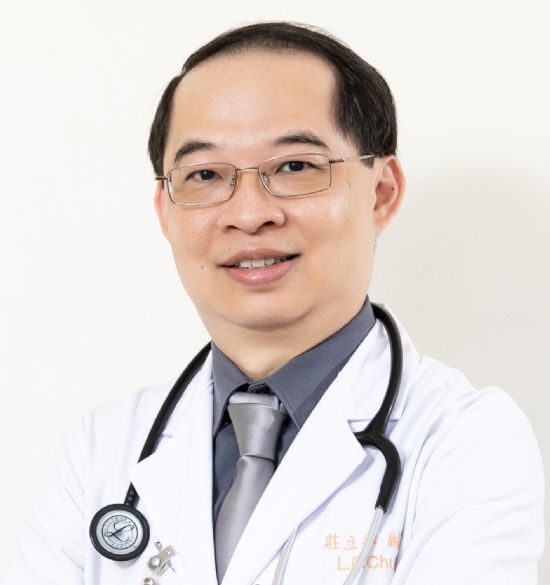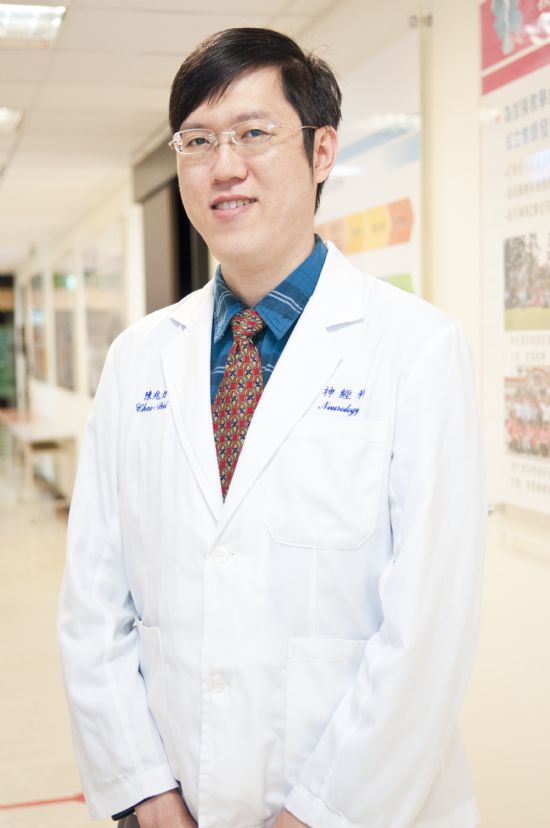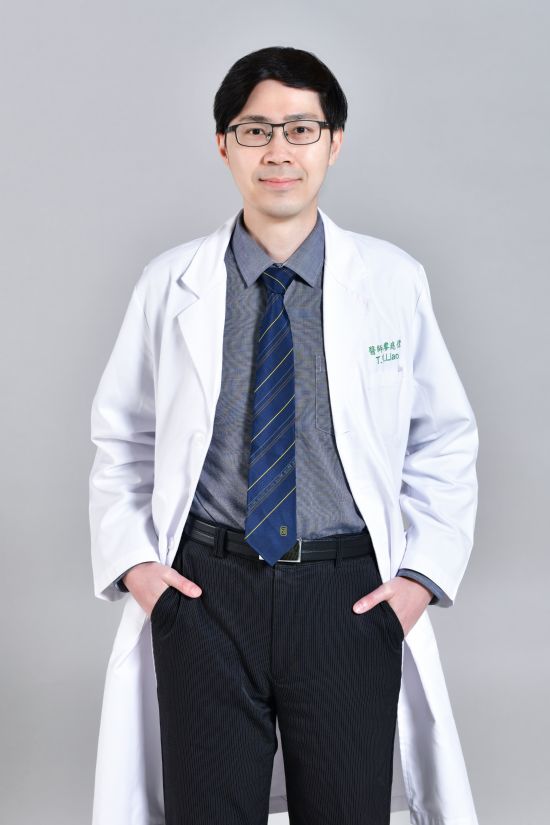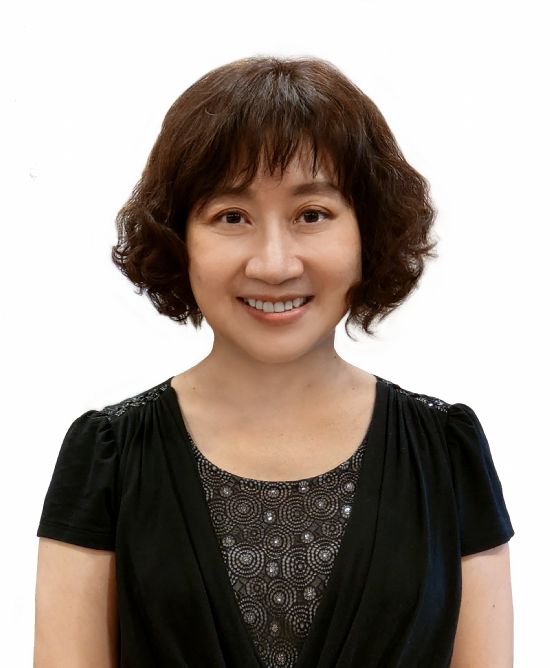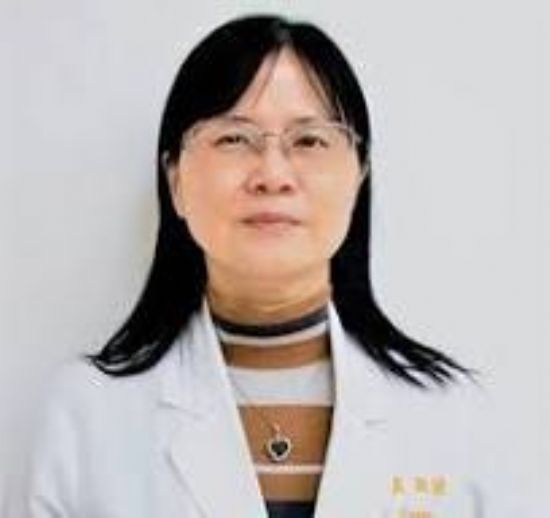Time slot's time in Taipei (GMT+8)
2025/11/21 08:30-*13:00 Room 201 ABC
- Kick-on Seminar III
Polysomnography (PSG): Essential Set-up for Clinical Application of Sleep Medicine
- Time
- Topic
- Speaker
- Moderator
- 08:30-09:00
- Sleep staging and scoring: what is new and how to do better?
- Speaker:
Li-Pang Chuang
- Moderator:
Ning-Hung Chen
- Li-Pang Chuang
- MD., PhD.
-
Chairman, Taiwan Society of Sleep Medicine
Director, Department of Pulmonary Infection and Immunology, Chang Gung Memorial Hospital, Linkou, Taiwan
Associate Professor, School of Medicine, Chang Gung University, Taoyuan, Taiwan
E-mail:lpchuang@gmail.com
Executive Summary:
Dr. Chuang obtained his MD degree in 1999 from the Medical School of Chang Gung University. He pursued internal medicine training at Chang Gung Memorial Hospital in Taipei. He spent a further 5 years practicing in the fields of thoracic medicine and sleep medicine, and completed his fellowship training pulmonology at the Chang Gung Memorial Hospital in 2005.
As a pulmonologist, Dr. Chuang is specialized in pulmonary disease, critical care and sleep disordered breathing. His clinical interests include lung infection disease, critical care and sleep apnea syndrome. He is also board certified in internal medicine by The Society of Internal Medicine, R.O.C. and in pulmonary medicine and critical care medicine by the Taiwan Society of Pulmonary and Critical Care Medicine, and in sleep medicine by the Taiwan Society of Sleep Medicine.
Dr. Chuang devoted himself in the field of sleep disordered breathing for more than 15 years after becoming the attending physician in Taiwan. He also completed his PhD program in the field of sleep disordered breathing, and have published over 90 papers. Right now, he is the active member of Taiwan Society of Sleep Medicine and serve as the chairman since 2024.
Dr. Chuang obtained his MD degree in 1999 from the Medical School of Chang Gung University. He pursued internal medicine training at Chang Gung Memorial Hospital in Taipei. He spent a further 5 years practicing in the fields of thoracic medicine and sleep medicine, and completed his fellowship training pulmonology at the Chang Gung Memorial Hospital in 2005.
As a pulmonologist, Dr. Chuang is specialized in pulmonary disease, critical care and sleep disordered breathing. His clinical interests include lung infection disease, critical care and sleep apnea syndrome. He is also board certified in internal medicine by The Society of Internal Medicine, R.O.C. and in pulmonary medicine and critical care medicine by the Taiwan Society of Pulmonary and Critical Care Medicine, and in sleep medicine by the Taiwan Society of Sleep Medicine.
Dr. Chuang devoted himself in the field of sleep disordered breathing for more than 15 years after becoming the attending physician in Taiwan. He also completed his PhD program in the field of sleep disordered breathing, and have published over 90 papers. Right now, he is the active member of Taiwan Society of Sleep Medicine and serve as the chairman since 2024.
Lecture Abstract:
This speech abstract explores the evolution of sleep staging and scoring, from its historical roots to the latest technological advancements, and provides practical insights on how to improve the accuracy and efficiency of the process.
The foundation of modern sleep scoring was laid by the Rechtschaffen and Kales (R&K) manual, which was later updated by the American Academy of Sleep Medicine (AASM) to standardize the scoring process. The AASM's manual is the definitive reference and undergoes regular updates, with the most recent versions refining rules for scoring epochs with multiple stages and improving the capture of arousals. Recent developments are increasingly focused on leveraging technology to overcome the limitations of manual scoring. Key advancements include:
Automated and AI-based scoring: Sophisticated algorithms, including deep learning neural networks, are being developed to analyze polysomnography (PSG) signals. These methods can perform sleep staging with a level of agreement comparable to human experts, reducing the time and labor-intensive nature of manual scoring.
Wearable and home-based devices: The shift from in-lab PSG to portable and home-based monitoring is making sleep studies more accessible and convenient. These devices use fewer sensors, sometimes relying on just a single-lead electrocardiogram (ECG) to achieve expert-level sleep staging.
Precision sleep medicine: Researchers are moving beyond a single index like the apnea-hypopnea index (AHI) to a more holistic approach. This involves integrating novel metrics from raw PSG signals, such as sleep depth and arousal intensity, with other data like genetics and patient questionnaires to create a more personalized understanding of sleep disorders.
This speech abstract explores the evolution of sleep staging and scoring, from its historical roots to the latest technological advancements, and provides practical insights on how to improve the accuracy and efficiency of the process.
The foundation of modern sleep scoring was laid by the Rechtschaffen and Kales (R&K) manual, which was later updated by the American Academy of Sleep Medicine (AASM) to standardize the scoring process. The AASM's manual is the definitive reference and undergoes regular updates, with the most recent versions refining rules for scoring epochs with multiple stages and improving the capture of arousals. Recent developments are increasingly focused on leveraging technology to overcome the limitations of manual scoring. Key advancements include:
Automated and AI-based scoring: Sophisticated algorithms, including deep learning neural networks, are being developed to analyze polysomnography (PSG) signals. These methods can perform sleep staging with a level of agreement comparable to human experts, reducing the time and labor-intensive nature of manual scoring.
Wearable and home-based devices: The shift from in-lab PSG to portable and home-based monitoring is making sleep studies more accessible and convenient. These devices use fewer sensors, sometimes relying on just a single-lead electrocardiogram (ECG) to achieve expert-level sleep staging.
Precision sleep medicine: Researchers are moving beyond a single index like the apnea-hypopnea index (AHI) to a more holistic approach. This involves integrating novel metrics from raw PSG signals, such as sleep depth and arousal intensity, with other data like genetics and patient questionnaires to create a more personalized understanding of sleep disorders.
- Time
- Topic
- Speaker
- Moderator
- 09:00-09:30
- Portable devices for clinical practice and sleep research: what and how the consumer sleep technology tells?
- Speaker:
Zhao-Wei Chen
- Moderator:
Dean Wu
- Zhao-Wei Chen
- MD, PhD
-
Director of Sleep Center, Attending Neurologist, Department of Neurology, Wan Fang Hospital, Taipei Medical University, Taipei, Taiwan
Assistant Professor, Department of Neurology, College of Medicine, School of Medicine, Taipei Medical University, Taipei, Taiwan
E-mail:jowytani@gmail.com
Executive Summary:
Dr. Jowy Tani, MD, PhD, is a physician–innovator at the intersection of neurology, sleep medicine, and digital health. He currently serves as Director of the Sleep Center at Wan Fang Hospital, Taipei Medical University, and is CEO of the TMU Biomed Accelerator. Internationally recognized for his translational work, Dr. Tani was a Global Faculty Fellow at Stanford Biodesign and previously a Fellow at the UCSF Memory and Aging Center and the Berkeley–Taiwan Biomed program.
His clinical expertise spans sleep medicine and cognitive neuroscience, while his research has advanced the use of portable and AI-driven devices for both clinical practice and sleep research. By integrating consumer technologies such as wearables with validated clinical tools, he has helped shape new models for scalable, telemedicine-compatible patient care.
In addition to his academic and entrepreneurial leadership, Dr. Tani serves as Deputy General Secretary of the Taiwan Neurological Society (2021–2025). His work emphasizes not only scientific rigor but also the creation of sustainable ecosystems where innovation in medical technology can directly benefit patients.
Dr. Tani’s vision bridges clinical care, digital health, and global biodesign. His contributions continue to inspire a new generation of clinicians and innovators to rethink how portable technologies can be harnessed for neurological and sleep medicine worldwide
Dr. Jowy Tani, MD, PhD, is a physician–innovator at the intersection of neurology, sleep medicine, and digital health. He currently serves as Director of the Sleep Center at Wan Fang Hospital, Taipei Medical University, and is CEO of the TMU Biomed Accelerator. Internationally recognized for his translational work, Dr. Tani was a Global Faculty Fellow at Stanford Biodesign and previously a Fellow at the UCSF Memory and Aging Center and the Berkeley–Taiwan Biomed program.
His clinical expertise spans sleep medicine and cognitive neuroscience, while his research has advanced the use of portable and AI-driven devices for both clinical practice and sleep research. By integrating consumer technologies such as wearables with validated clinical tools, he has helped shape new models for scalable, telemedicine-compatible patient care.
In addition to his academic and entrepreneurial leadership, Dr. Tani serves as Deputy General Secretary of the Taiwan Neurological Society (2021–2025). His work emphasizes not only scientific rigor but also the creation of sustainable ecosystems where innovation in medical technology can directly benefit patients.
Dr. Tani’s vision bridges clinical care, digital health, and global biodesign. His contributions continue to inspire a new generation of clinicians and innovators to rethink how portable technologies can be harnessed for neurological and sleep medicine worldwide
Lecture Abstract:
Polysomnography (PSG) remains the diagnostic gold standard in sleep medicine, yet its high cost, limited accessibility, and logistical constraints hinder widespread application. Recent advances in portable devices and consumer sleep technologies present an opportunity to address these limitations, but their clinical value requires careful evaluation.
This lecture will review the current landscape of portable and wearable devices for sleep assessment, with an emphasis on their comparative validity, strengths, and limitations relative to PSG. Home sleep apnea testing (HSAT) has emerged as a practical alternative in selected patient populations, and accumulating evidence supports its role in diagnostic pathways. Beyond HSAT, a growing number of consumer devices and novel multimodal systems, ranging from ECG-based heart rate variability monitoring to artificial intelligence–driven jaw movement and audio fusion technologies, offer promising adjuncts for both clinical practice and research.
Clinical integration strategies will be discussed, including how consumer devices may function as entry points for screening, subsequently funneling patients toward validated HSAT and PSG when appropriate. Examples of mobile ECG platforms and AI-enhanced devices will illustrate their potential.
Polysomnography (PSG) remains the diagnostic gold standard in sleep medicine, yet its high cost, limited accessibility, and logistical constraints hinder widespread application. Recent advances in portable devices and consumer sleep technologies present an opportunity to address these limitations, but their clinical value requires careful evaluation.
This lecture will review the current landscape of portable and wearable devices for sleep assessment, with an emphasis on their comparative validity, strengths, and limitations relative to PSG. Home sleep apnea testing (HSAT) has emerged as a practical alternative in selected patient populations, and accumulating evidence supports its role in diagnostic pathways. Beyond HSAT, a growing number of consumer devices and novel multimodal systems, ranging from ECG-based heart rate variability monitoring to artificial intelligence–driven jaw movement and audio fusion technologies, offer promising adjuncts for both clinical practice and research.
Clinical integration strategies will be discussed, including how consumer devices may function as entry points for screening, subsequently funneling patients toward validated HSAT and PSG when appropriate. Examples of mobile ECG platforms and AI-enhanced devices will illustrate their potential.
- Time
- Topic
- Speaker
- Moderator
- 09:30-10:00
- Ambulatory PSG in sleep related motor behaviors: development, assessment and application
- Speaker:
Ting-Wei Liao
- Moderator:
Shih-Wei Lin
- Ting-Wei Liao
- MD
-
Attending physician, Department of Neurology, Chang Gung Memorial Hospital, Linkou Medical Center
E-mail:liao8361@gmail.com
Executive Summary:
Dr. Ting-Wei Liao is an Assistant Professor and attending neurologist at the Department of Neurology, Chang Gung Memorial Hospital, Linkou Medical Center, Taiwan. He accomplished his neurology residency, served as chief resident, and completed fellowship training at the same institution.
Dr. Liao received his M.D. degree from National Cheng Kung University, Tainan. He is currently the Deputy Secretary General of the Taiwan Society of Sleep Medicine and plays an active role in advancing sleep-related clinical practice and education in Taiwan.
Dr. Liao’s research interests lie in the fields of epilepsy, sleep medicine, and electroencephalography (EEG). He has conducted clinical studies on sleep movement disorders, including periodic limb movements in sleep (PLMS), as well as the interplay between sleep-disordered breathing and epilepsy. His work also includes refining diagnostic EEG techniques and applying them to improve the management of epilepsy and sleep-related conditions.
Dr. Ting-Wei Liao is an Assistant Professor and attending neurologist at the Department of Neurology, Chang Gung Memorial Hospital, Linkou Medical Center, Taiwan. He accomplished his neurology residency, served as chief resident, and completed fellowship training at the same institution.
Dr. Liao received his M.D. degree from National Cheng Kung University, Tainan. He is currently the Deputy Secretary General of the Taiwan Society of Sleep Medicine and plays an active role in advancing sleep-related clinical practice and education in Taiwan.
Dr. Liao’s research interests lie in the fields of epilepsy, sleep medicine, and electroencephalography (EEG). He has conducted clinical studies on sleep movement disorders, including periodic limb movements in sleep (PLMS), as well as the interplay between sleep-disordered breathing and epilepsy. His work also includes refining diagnostic EEG techniques and applying them to improve the management of epilepsy and sleep-related conditions.
Lecture Abstract:
Sleep-related motor behaviors (SRMBs), encompassing disorders such as rapid eye movement sleep behavior disorder (RBD), periodic limb movement disorder (PLMD), and non-REM parasomnias, require detailed assessment of both sleep physiology and associated movements. While in-laboratory polysomnography (PSG) is the gold standard, home-based or ambulatory PSG has emerged as a promising alternative, offering evaluation in the patient’s habitual sleep environment. This presentation will review the current evidence on the use of ambulatory PSG, with or without additional monitoring channels, in the diagnosis and management of SRMBs. Technical considerations, diagnostic performance, and practical limitations will be discussed. Future perspectives on technological development, clinical integration, and standardization will also be explored.
Sleep-related motor behaviors (SRMBs), encompassing disorders such as rapid eye movement sleep behavior disorder (RBD), periodic limb movement disorder (PLMD), and non-REM parasomnias, require detailed assessment of both sleep physiology and associated movements. While in-laboratory polysomnography (PSG) is the gold standard, home-based or ambulatory PSG has emerged as a promising alternative, offering evaluation in the patient’s habitual sleep environment. This presentation will review the current evidence on the use of ambulatory PSG, with or without additional monitoring channels, in the diagnosis and management of SRMBs. Technical considerations, diagnostic performance, and practical limitations will be discussed. Future perspectives on technological development, clinical integration, and standardization will also be explored.
- Time
- Topic
- Speaker
- Moderator
- 10:30-11:00
- Sleep laboratory from essential requirement to high-end quality: Japanese experience
- Speaker:
Yuichi Inoue
- Moderator:
Chung-Yao Hsu
- Yuichi Inoue
- MD, PhD
-
Professor, Department of Somnology, Tokyo Medical University
President, Yoyogi Sleep Disorder Center
E-mail:inoue@somnology.com
Executive Summary:
Yuichi Inoue(MD, Phd)
Professor, Department of Somnology, Tokyo Medical University
President, Yoyogi Sleep Disorder Center
Director, Japan Somnology Center, Institute of Neuropsychiatry
Yuichi Inoue is currently Professor of Department of Somnology, Tokyo Medical University. He is also President of Yoyogi Sleep Disorder Center and Director of Japan Somnology Center, Institute of Neuropsychiatry.He got a doctor of medicine degree in graduate school of Tottori University in 1986. He became a Professor of the Department of Psychiatry at Tokyo Medical University in 2007. He also assumed the position of Director of Japan Somnology Center and Professor of Department of Somnology at Tokyo Medical University in 2008. He became President of Yoyogi Sleep Disorder Center in 2011.
He now is the immediate post President of Asian Sleep Society of Medicine, Board Directors of The Japanese Society for Chronobiology, and member of World Sleep Society Program Committee. Main target of his research is clinical sleep medicine including researches on insomnia, RBD, movement disorders and hypersomnia.
Yuichi Inoue(MD, Phd)
Professor, Department of Somnology, Tokyo Medical University
President, Yoyogi Sleep Disorder Center
Director, Japan Somnology Center, Institute of Neuropsychiatry
Yuichi Inoue is currently Professor of Department of Somnology, Tokyo Medical University. He is also President of Yoyogi Sleep Disorder Center and Director of Japan Somnology Center, Institute of Neuropsychiatry.He got a doctor of medicine degree in graduate school of Tottori University in 1986. He became a Professor of the Department of Psychiatry at Tokyo Medical University in 2007. He also assumed the position of Director of Japan Somnology Center and Professor of Department of Somnology at Tokyo Medical University in 2008. He became President of Yoyogi Sleep Disorder Center in 2011.
He now is the immediate post President of Asian Sleep Society of Medicine, Board Directors of The Japanese Society for Chronobiology, and member of World Sleep Society Program Committee. Main target of his research is clinical sleep medicine including researches on insomnia, RBD, movement disorders and hypersomnia.
Lecture Abstract:
Formulating a treatment plan from an accurate diagnosis is the foundation of effective sleep-disorder care. We propose a practical, stepwise pathway centered on testing and interpretation by board-certified sleep specialists, complemented by secondary PSG analytics and judicious use of wearables. Video-polysomnography (v-PSG) conducted and read under the leadership of certified technologists and physicians improves diagnostic accuracy by coupling physiological signals with time-locked video, enhancing detection and classification of events with behavioral or context-dependent phenotypes. It is particularly valuable where actigraphy or non-video PSG underperform: NREM parasomnias, REM sleep behavior disorder, nocturnal seizures, sleep-related movement disorders, sleep-related hypoventilation, and complex or treatment-refractory obstructive sleep apnea.
Beyond routine indices (AHI, arousal index, PLM index), secondary PSG processing adds mechanistic resolution. Quantitative EEG (e.g., spectral power, cyclic alternating pattern), cardiopulmonary coupling, breath-by-breath flow-limitation metrics, and machine-learning–assisted event profiling help delineate endotypes and instability patterns that inform prognosis and therapy selection. Specialist adjudication also improves inter-rater reliability in ambiguous epochs (e.g., respiratory effort–related arousals, mixed parasomnia/epilepsy presentations), reducing misdiagnosis and downstream costs.
Wearables are incorporated for screening and longitudinal monitoring. Their strengths—accessibility, night-to-night sampling, and patient engagement—support triage in primary care and tracking of treatment response once a definitive diagnosis is established. However, variable specificity and limited signals mean wearables are not substitutes for v-PSG when diagnostic stakes are high or motor/behavioral phenomena must be observed.
In sum, specialist-performed and interpreted v-PSG, augmented by advanced PSG analytics, elevates diagnostic precision and yields research-ready phenotypes. Wearables serve as complementary tools for screening and follow-up, aligning clinical accuracy with scientific rigor.
Formulating a treatment plan from an accurate diagnosis is the foundation of effective sleep-disorder care. We propose a practical, stepwise pathway centered on testing and interpretation by board-certified sleep specialists, complemented by secondary PSG analytics and judicious use of wearables. Video-polysomnography (v-PSG) conducted and read under the leadership of certified technologists and physicians improves diagnostic accuracy by coupling physiological signals with time-locked video, enhancing detection and classification of events with behavioral or context-dependent phenotypes. It is particularly valuable where actigraphy or non-video PSG underperform: NREM parasomnias, REM sleep behavior disorder, nocturnal seizures, sleep-related movement disorders, sleep-related hypoventilation, and complex or treatment-refractory obstructive sleep apnea.
Beyond routine indices (AHI, arousal index, PLM index), secondary PSG processing adds mechanistic resolution. Quantitative EEG (e.g., spectral power, cyclic alternating pattern), cardiopulmonary coupling, breath-by-breath flow-limitation metrics, and machine-learning–assisted event profiling help delineate endotypes and instability patterns that inform prognosis and therapy selection. Specialist adjudication also improves inter-rater reliability in ambiguous epochs (e.g., respiratory effort–related arousals, mixed parasomnia/epilepsy presentations), reducing misdiagnosis and downstream costs.
Wearables are incorporated for screening and longitudinal monitoring. Their strengths—accessibility, night-to-night sampling, and patient engagement—support triage in primary care and tracking of treatment response once a definitive diagnosis is established. However, variable specificity and limited signals mean wearables are not substitutes for v-PSG when diagnostic stakes are high or motor/behavioral phenomena must be observed.
In sum, specialist-performed and interpreted v-PSG, augmented by advanced PSG analytics, elevates diagnostic precision and yields research-ready phenotypes. Wearables serve as complementary tools for screening and follow-up, aligning clinical accuracy with scientific rigor.
- Time
- Topic
- Speaker
- Moderator
- 11:00-11:30
- Circadian rhythm and sleep-related disorders: the role of wearable devices
- Speaker:
Yu Sun
- Moderator:
Cheng-Yu Wei
- Yu Sun
- MD, PhD
-
Director of Neurology Department, En Chu Kong Hospital
E-mail:sunyu.jj.lu@gmail.com
Executive Summary:
Dr. Yu Sun is a board-certified neurologist with additional certifications in neurocritical care and sleep medicine. She graduated from China Medical University in Taichung, Taiwan, and completed her neurology residency at National Taiwan University Hospital. She later earned her PhD from the Institute of Epidemiology and Preventive Medicine at National Taiwan University.
Dr. Sun currently serves as the Director of the Department of Neurology at En Chu Kong Hospital in New Taipei City, Taiwan, and is an Adjunct Associate Professor of Neurology at the College of Medicine, National Taiwan University. She is also affiliated with National Taiwan University Hospital.
Her academic and clinical interests include cerebrovascular disease, dementia, and sleep medicine. Dr. Sun has served as principal or co-investigator on numerous research projects funded by the Taiwan Ministry of Science and Technology and Ministry of Health and Welfare. She has authored almost 100 peer-reviewed articles and has been invited as a speaker at national and international conferences, sharing her expertise on stroke prevention, dementia care, and sleep-related neurological disorders.
Dr. Yu Sun is a board-certified neurologist with additional certifications in neurocritical care and sleep medicine. She graduated from China Medical University in Taichung, Taiwan, and completed her neurology residency at National Taiwan University Hospital. She later earned her PhD from the Institute of Epidemiology and Preventive Medicine at National Taiwan University.
Dr. Sun currently serves as the Director of the Department of Neurology at En Chu Kong Hospital in New Taipei City, Taiwan, and is an Adjunct Associate Professor of Neurology at the College of Medicine, National Taiwan University. She is also affiliated with National Taiwan University Hospital.
Her academic and clinical interests include cerebrovascular disease, dementia, and sleep medicine. Dr. Sun has served as principal or co-investigator on numerous research projects funded by the Taiwan Ministry of Science and Technology and Ministry of Health and Welfare. She has authored almost 100 peer-reviewed articles and has been invited as a speaker at national and international conferences, sharing her expertise on stroke prevention, dementia care, and sleep-related neurological disorders.
Lecture Abstract:
Circadian rhythm is central to the regulation of the sleep–wake cycle, and its disruption contributes to a range of sleep-related disorders, including insomnia, circadian rhythm sleep–wake disorders (CRSWD), narcolepsy, idiopathic hypersomnia, and REM sleep behavior disorder (RBD). Wearable devices, provide a non-invasive means of estimating rest–activity patterns and have become practical tools for long-term sleep monitoring in natural environments.
Actigraphy remains the most validated wearable method in sleep medicine. It reliably estimates total sleep time, sleep efficiency, and circadian rest–activity rhythms, with high sensitivity for detecting sleep (up to 96%) but lower specificity for wakefulness (as low as 33%), especially during nocturnal periods. Despite these limitations, actigraphy is sufficiently accurate for both clinical and research use, particularly in populations without severe sleep fragmentation.
Clinically, actigraphy is especially valuable in disorders of circadian misalignment, such as CRSWD, by supporting diagnosis and monitoring treatment effects. It also aids in distinguishing insomnia subtypes through discrepancies between subjective and objective measures. Emerging data suggest further applications in narcolepsy and RBD, where altered motor activity profiles may yield insights into pathophysiology and phenoconversion risk.
Beyond traditional actigraphy, consumer-grade wearable devices equipped with multiple sensors now enable continuous monitoring of sleep, circadian rhythms, and physiological parameters at scale. Combining wearable-derived data with questionnaires enhances RBD screening and permits home-based severity assessment. Moreover, integrated metrics such as gait analysis and 24-hour activity rhythms may serve as early markers of neurodegenerative risk. Advances in algorithms and validation of detection models using consumer devices are paving the way toward broader clinical integration.
This lecture will highlight the evolving role of wearable technology in sleep medicine, focusing on its current strengths, limitations, and future potential in personalized health and disease prediction.
Circadian rhythm is central to the regulation of the sleep–wake cycle, and its disruption contributes to a range of sleep-related disorders, including insomnia, circadian rhythm sleep–wake disorders (CRSWD), narcolepsy, idiopathic hypersomnia, and REM sleep behavior disorder (RBD). Wearable devices, provide a non-invasive means of estimating rest–activity patterns and have become practical tools for long-term sleep monitoring in natural environments.
Actigraphy remains the most validated wearable method in sleep medicine. It reliably estimates total sleep time, sleep efficiency, and circadian rest–activity rhythms, with high sensitivity for detecting sleep (up to 96%) but lower specificity for wakefulness (as low as 33%), especially during nocturnal periods. Despite these limitations, actigraphy is sufficiently accurate for both clinical and research use, particularly in populations without severe sleep fragmentation.
Clinically, actigraphy is especially valuable in disorders of circadian misalignment, such as CRSWD, by supporting diagnosis and monitoring treatment effects. It also aids in distinguishing insomnia subtypes through discrepancies between subjective and objective measures. Emerging data suggest further applications in narcolepsy and RBD, where altered motor activity profiles may yield insights into pathophysiology and phenoconversion risk.
Beyond traditional actigraphy, consumer-grade wearable devices equipped with multiple sensors now enable continuous monitoring of sleep, circadian rhythms, and physiological parameters at scale. Combining wearable-derived data with questionnaires enhances RBD screening and permits home-based severity assessment. Moreover, integrated metrics such as gait analysis and 24-hour activity rhythms may serve as early markers of neurodegenerative risk. Advances in algorithms and validation of detection models using consumer devices are paving the way toward broader clinical integration.
This lecture will highlight the evolving role of wearable technology in sleep medicine, focusing on its current strengths, limitations, and future potential in personalized health and disease prediction.
- Time
- Topic
- Speaker
- Moderator
- 11:30-12:00
- Narcolepsy and hypersomnolence disorders : PSG-based diagnostic approach
- Speaker:
Yu-Shu Huang
- Moderator:
Liang-wen Hang
- Yu-Shu Huang
- MD, PhD
-
Professor of Department of Psychiatry and Sleep center,, Chang Gung Memorial Hospital.
E-mail:yushuhuang1212@gmail.com

